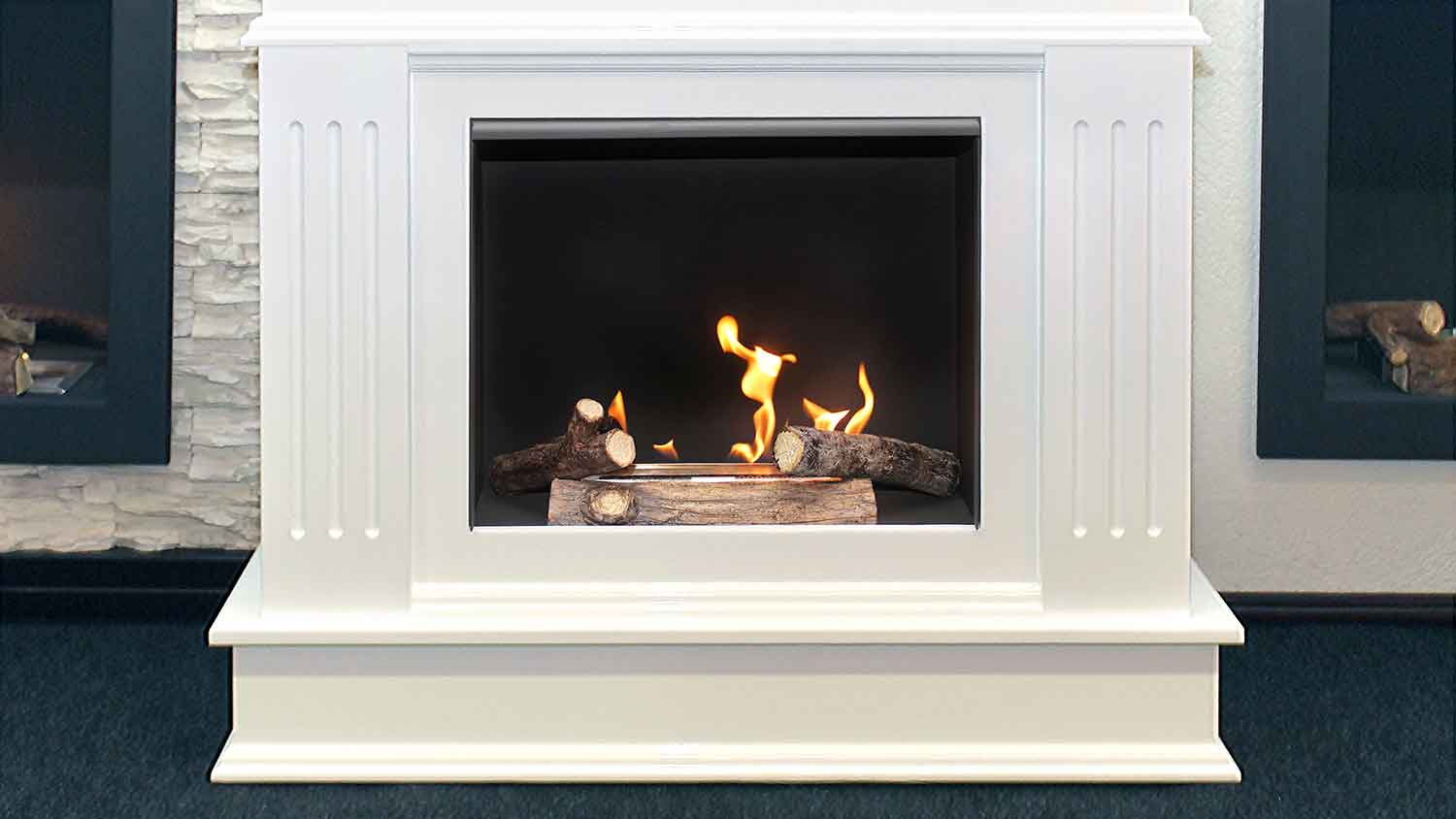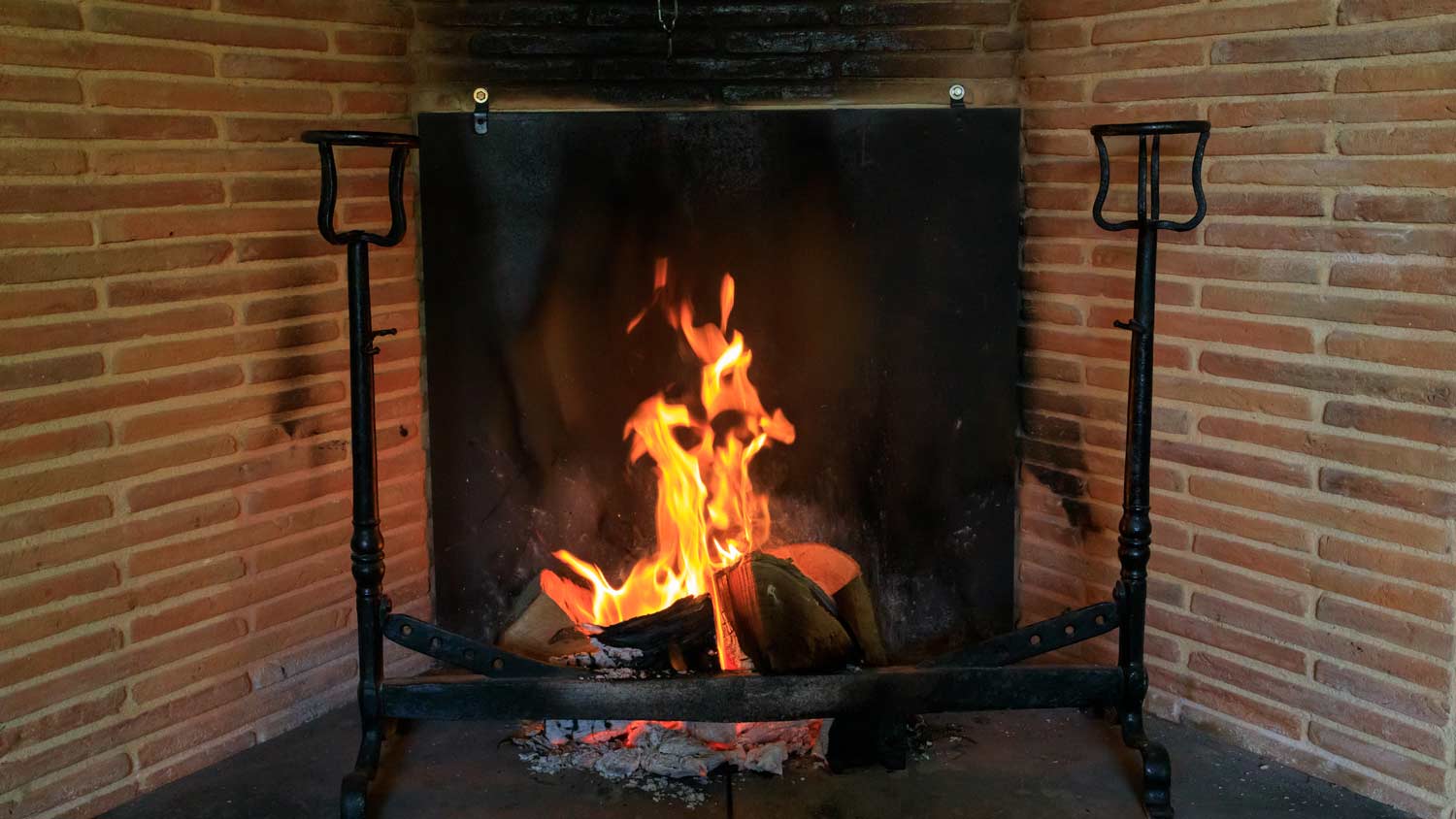6 Easy Tips for Storing Firewood
Keep things safe and cozy with these easy firewood storage tips


There’s nothing better than a roaring fire, whether it’s to warm up a cold winter night or roast the perfect s'mores. Having a stash of firewood on hand means you can light a toasty fire anytime the mood strikes. But if you’re keen on keeping a steady supply of firewood on your property, you’ll want to follow some best practices to keep things safe and the logs in burning condition. After all, you've likely paid for the cost of a cord of wood—or worked up a sweat chopping it yourself—so don’t let it go to waste. By following these tips for how to store firewood, you’ll keep your property safer, your home cleaner, and ensure that you can keep enjoying fires all year long.
1. Pick the Right Location
No matter if you are hauling your own firewood or having it brought to you by a local firewood delivery service, you’ll need to take a few factors into consideration before deciding where to store it.
Avoid placing firewood too close to your home, and never put it directly against a building of any kind. Also, make sure that the firewood supply is a good distance away from any trees or shrubbery to help reduce the risk of fire.
2. Stack Firewood Correctly
It turns out there is actually a right way to stack up your firewood. Opt to stack wood in rows, and leave enough space between pieces to allow for enough air circulation. If your firewood is newer or “green,” be sure to place it at a location where the sun will reach it and help to dry it out. And to help prevent accidental tripping, stack your firewood so that it’s level and never more than 4 feet tall.
3. Don’t Use the Ground

Stacking firewood directly on the ground can lead to problems, such as bug infestations and wood that is too wet to burn. Instead, choose one of the many creative firewood storage ideas available these days. Whether you opt for an entire outdoor shed, or simply a decorative indoor basket or rack, keeping your wood up and off the ground means you’ll be ready for a fire anytime.
4. Cover the Firewood Up
If you’re storing your firewood outside, it will be exposed to the elements all year long. Covering it up helps keep the wood less damp, extends its lifespan, and creates fires that are less smoky. Using a tarp or plastic sheeting, drape the material over the top of your firewood pile. If needed, use ropes to prevent it from blowing away. Leaving the sides open and exposed will allow for plenty of airflow.
5. Keep Pests at Bay
By stacking your covered firewood somewhere other than directly on the ground or under trees, pests won’t be quite as tempted to make a home in the logs. But there are still plenty of insects that may take refuge on or in the wood. Before bringing your firewood inside, visually inspect it for any bugs. You also may want to hit some logs together to knock out any additional pests.
Once the firewood is inside, burn it right away and avoid having it sit around in your home so you don’t get any unwanted roommates.
6. Practice FIFO
The final firewood storage tip is to practice FIFO: first in, first out. By burning the oldest wood first, you’ll be using the most seasoned logs, as well as helping to prevent bug infestations from building up. While doing this may mean constantly restacking your firewood, it’s worth the extra effort to maximize your wood stash and enjoy as many warm nights as possible.





- Best and Worst Woods for Fireplaces
- 8 Common Problems That Can Lead to Pest Infestations
- 13 Smart Ways to Weatherize Your Home in the Winter
- 10 Tips for a Pest-Free Home in the Winter
- How to Build a House: Your Complete Guide to the Home-Building Process
- Which Home Projects To Put On Your To-Do List First After Moving
- 5 Painless Pest Control Tips for Spring
- What to Do After a House Fire: 8 Steps for Home Fire Recovery
- 14 Home Renovation Tips for a Stress-Free Project
- How to Prepare for a Winter Storm: 10 Crucial Tips















